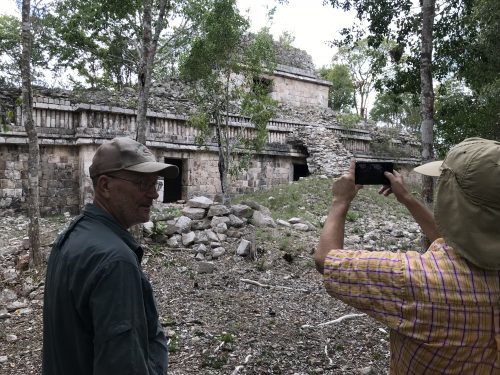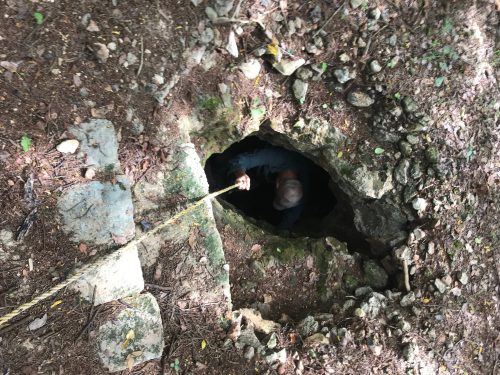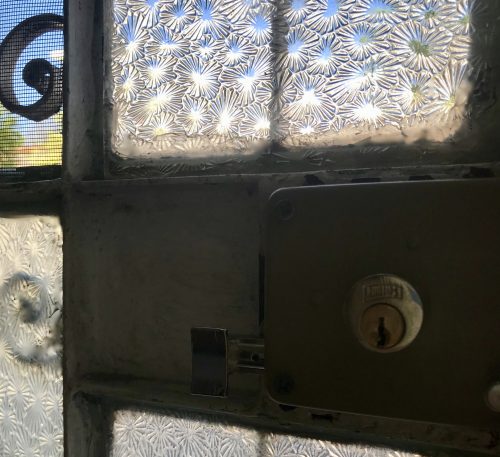
“Other side of the wall”? Photo by MeridaGOround.com
Excerpted below is a portion of an interview with a Mexican-American author hosted by Krista Tippett, of OnBeing.org who does a weekly podcast. Here they discuss the border wall. (*Liminal* means a transitional stage ; both sides of a boundary.)
MS. TIPPETT: I feel like one thing you do — as much in your fiction as in your nonfiction, and certainly in Into the Beautiful North — is, you work with the idea of a border or a wall, not, in fact, as a hard and fast thing: as a liminal space, as a liminal zone.
MR. URREA: It is a liminal space, absolutely.
MS. TIPPETT: Right, but just to think about it that way opens up a lot of imagination.
MR. URREA: I think liminal space is where all writers go. That place of crossing, that place of pressure, of two things meeting, that’s a rich — that’s where the plankton wells up and the currents meet. And you can choose to see it in different ways. And either the border is a hideous, festering scar of oppression, horror, and violence, or it’s a fraternal space where two cultures meet and can exchange. And honestly, particularly before the narco wars, there was and there still are bastions of friendship along the border. And all you have to do is go to places near Nogales or Yuma, where kids on the Mexican side and kids on the American side play volleyball over the wall with each other.
MS. TIPPETT: Yeah, and see, we don’t hear these stories.
MR. URREA: No, you don’t. And I recently did a ballet — I didn’t. I read poems while they danced.
MS. TIPPETT: I’m imagining it.
MR. URREA: No. Me in a tutu — nah.
[laughter]
But I narrated this ballet. It was the 100th anniversary of a Stravinsky piece, which included a Faustian journey through a wasteland, where the man trying to get to safety has to make a deal with the devil, essentially. That was 100 years ago; this time, it’s people dying in the desert, making that terrible deal to survive. But when he did his other piece — his name is Steven Schick.
MS. TIPPETT: Oh, yes.
MR. URREA: He’s brilliant. I keep saying, “This guy’s…”
MS. TIPPETT: He also spent some time in Berlin, right? And that was a wall with which I had some intimacy. And I remember, still, when Michael Jackson came and did a concert right on the western side of the wall, just as things were falling apart. But the concertgoers gathered on the eastern side. It was exactly that. But one thing you point out is — so in Berlin, on the western side, the wall was painted and raucous and alive and rebellious, on the western side, where people were free. In Mexico, what do you say? In Mexico, it’s the Mexican side —
MR. URREA: It’s the reverse.
MS. TIPPETT: It’s the reverse side that’s —
MR. URREA: Well, thank God for Steven Schick. I stole it, when he was telling me it, because it was the perfect wrap-up for that piece for The Times. When you went across to the other side, he said, the Mexican side, the entire fence is an art gallery covered with paintings, sculptures, graffiti. There are ice-cream men and taco stands, and there are mariachis, and there are lovers, and there are people dancing and strolling. The American side: steel, trucks, dogs, helicopters, guns.
MS. TIPPETT: No art, no graffiti.
MR. URREA: No nothin’, and he said, “I suddenly realized that that was the Soviet side in Berlin.”
[laughter]
MS. TIPPETT: Yeah, it was. And I think you said, “Who was free? Who was free, and who was prisoner?”
MR. URREA: Yeah, what exactly is that wall for, then? Hmm.























